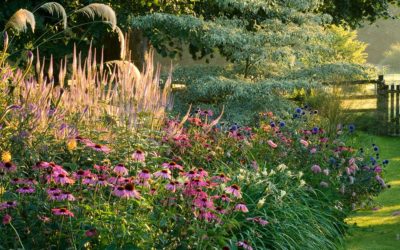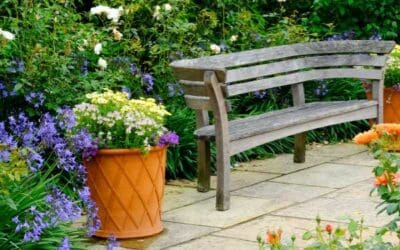Want to know how to plant bulbs, but don’t know where to start? If you dream of having garden beds full of spring flowers, the time to start planning for that is now. The crocus, daffodils, hyacinths, tulips, irises – all those beautiful, colorful springtime blooms – begin as bulbs planted in the fall, and once established in the garden, grow and multiply year after year after year, bringing an abundance of flowers every springs.
Most experienced gardeners likely have a variety of bulbs already growing in the landscape, but if this is your first garden, or your first time planting spring-flowering bulbs – here’s the how-to:

Bulbs, Rhizomes, Corms
Some gardeners use the general word “bulb” to describe different types of root systems the produce those favorite spring flowers.
True bulbs are generally round-ish with a flat base and a pointed top. They can range in size from fairly small to large, and have a papery outer layer. Daffodils, tulips, hyacinths and allium are true bulbs.
Bearded irises, lily of the valley, agapanthus and cannas grow from rhizomes, roots that are actually thick below-ground stems. The primary growth point is at one end of the rhizome, with more growing points along the sides. Roots grow into the soil from the underside of the rhizome.
A corm is an underground stem base that resembles a small bulb. Roots grow from the bottom, and the foliage and flowers grow from the growth point at the top. Crocus (one the earliest-blooming spring blooms), crocosmia and gladiolus are among the favorites that grow from corms.
Tubers and tuberous roots are thick or swollen underground stems. Elephant’s ear, caladium and anemone grow from tubers; daylily, dahlia, liatris and other garden favorites grow from tuberous roots.

Get Ready to Plant
The best time to plant spring-flowering bulbs is after the soil cools down – some experts recommend waiting until after the first frost, to ensure that the bulbs won’t be fooled into thinking it’s time to grow. But you can plan ahead of time, of course.
Think about where to plant. Most spring bulbs grow best in a sunny spot in soil that drains well. Keep in mind, too, that after the flowers bloom in the spring, it’s best to leave the foliage in place for several weeks. While the leaves are green, they are gathering energy for the bulb to bloom again the following year. Wait until the leaves begin to turn yellow or brown; it’s best not to plant bulbs in the middle of a lawn that will be mowed soon after the flowers are gone.
The “Dig / Drop / Done” method – dig a hole, drop in the bulb, fill in the hole and add water – can work in some cases, but you’ll have better results in the long run if you put a little time into bed prep.
If you are planning a new garden bed for bulbs, dig the soil to about 12 inches deep and work in plenty of organic matter. To plant individual bulbs in an established bed, dig a hole about three times the depth of the bulb, add a bit of loose soil and bulb food to the hole, place the bulb (pointed side up) and fill the hole to cover the bulb. Water and wait for spring.

Bulb-Planting Tips
- Different varieties of daffodils bloom at different times – some as early as February in Middle Tennessee — so to have daffodils blooming longer in your garden beds, plant both early and late varieties.
- Some bulbs are like candy to the rodents that live around (and under) your landscape. Squirrels, voles, chipmunks and gophers can make your bulb bed disappear before you can enjoy it. Most critters will avoid daffodil bulbs, but if you worry about your tulips or other tasty-to-rodents bulbs, consider planting the bulbs with a barrier of chicken wire, or sprinkle blood meal or chili pepper around the planting site to make it unpalatable to the unwelcome guests.
- When you plant, consider how to arrange the different flowering bulbs for the best “show” in the spring. Some gardeners enjoy blocks of color, others enjoy mixed colors. At any rate, spring-flowering bulbs look best in clumps or clusters, rather than as lonely individuals in the landscape.
- Some Middle Tennessee gardeners find tulips disappointing, as they often don’t bloom for more than two years. Planting new tulips each fall is the best way to get a reliable show of tulips in the spring.
Visit Gardens of Babylon’s Garden Center to find a wide selection of favorite spring-flowering bulbs to plant in your landscape this fall.





